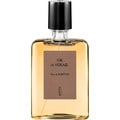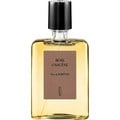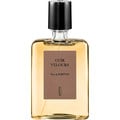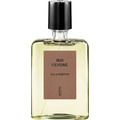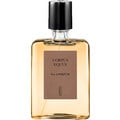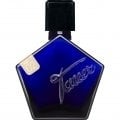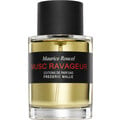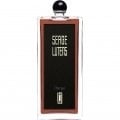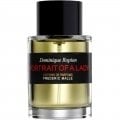01/11/2021

Gold
541 Reviews
Translated
Show original

Gold
Top Review
66
Lucky coincidences
Have you ever had a "moment of serendipity" while exploring a new scent?
"Serendipity" - this term, which could be translated as "happy coincidence", came to mind when I first took a closer look at "Nuit de Bakélite" and its creator Isabelle Doyen.
For Christmas, I received a wonderful book from my French friend called "Les Parfumeurs" - dans l'intimité de grands créateurs de parfum" (Harper Collins, 2018).
Here, ten great noses (including Thierry Wasser, Mathilde Laurent, Annick Menardo u. Jean-Claude Ellena, to name but a few) themselves talk about their careers and their profession, but also about very private things.
Isabelle Doyen is also in the mix (p.51-77).
I devoured the text written by her and was particularly pleased with her explanations of various ingredients of "Nuit de B.", as I always find it fascinating when perfumers explain their work.
In addition, there is a lot that I did not know about Madame Doyen, which makes me feel very close to her for personal reasons.
A substance has it Isabelle Doyen namely since her childhood (as well as me) very taken. And that is galbanum. The first perfume she wore as a teenager was "Vent Vert" by Balmain, created by the brilliant Madame Cellier. It contains a very strong galbanum note.
"I found it fascinating," writes Isabelle Doyen. (All the following French passages are translated by me, as the book has not yet been published in German).
"This fascination with galbanum never left me. By the way, it turned out that in Iran produces an excellent galbanum. Later in life, when I met my husband in Pakistan and I learned that he was Iranian, I told him, 'You come from the land of galbanum!' He didn't know what that was, so he just answered 'yes'. ."
It was clear that my future husband possessed a very special aura thanks to this earthy element...".
She goes on to write that her very special life scents include "Chanel No. 19", "Mitsouko", "Miss Dior" and "Femme de Rochas". Of course, these contain galbanum.
Another association with Iran represents her particular love of saffron. "Saffron is my oldest scent memory and because everything overlaps, saffron is also a scent associated with Iran, just like galbanum."
In "Nuit de B.", saffron and galbanum are found in the top notes immediately upon spraying on! Fantastic.
But the fragrance is made particularly exciting by the extraordinary "treatment" that Doyen gives the tuberose. On page 63 of the book "Les Parfumeurs" she speaks of four dreams that she wanted to realize or still wants.
"One of my dreams is to lie down in a field of tuberoses.... and because I have certain little obsessions, I would like it to be fantastic Iranian tuberoses. Tuberose is one of those flowers that hasn't been "destroyed" yet. They have not yet been used in cleaning products beyond all measure, unlike the lilac or the lily of the valley. There are flowers that have really already become caricatures that can repel us, although a small sprig of true lily of the valley can be extraordinarily beautiful for those who love this fragrance. To restore the delicacy of these 'destroyed' fragrances is, in my view, one of the most difficult exercises there is."
There is a very particular tuberose in "Nuit de B.," one that even I, who am not usually a big fan of the note, like. It's a green, airy impression. A tuberose that smells a bit like rootwork and medicine, but also evokes carrot and iris. The galbanum is very much present, especially at the start, but it continues to pull through the scent as it progresses, giving it a certain vintage green charm.
Some tree bark and birch tar can also be detected, but mainly the tuberose in its completely new green spicy guise.
By the way, I am not able to go into the "Bakelite" association, since the substance means nothing to me and I have no memory of the smell of an old tube radio or a telephone made of Bakelite.
"Nuit de B." is unlike any perfume I've smelled before.... (and I have tried many, many). Anyone who chooses this fragrance is wearing something new, something no one has ever created before in this form.
No wonder the fragrance has won various awards: "Prix de l'émotion de l'Olfactorama", "Expert Award of the Fragrance Foundation Awards", "Independent Prize at the 'Art and Olfaction Awards' " in 2018.
I find it particularly exciting that "Nuit de B." ultimately refers to two masterpieces by the great Germaine Cellier, namely "Vent Vert" (1945) and "Fracas" (1948).
In my view, the clever Isabelle Doyen therefore follows in the footsteps of Germaine Cellier with this outstanding work.
Isabelle writes thus:
"But sometimes, too rarely for my taste, one becomes aware that at a very specific moment in a formula, something like MAGIC takes place." (S. 68).
In "Nuit de B." that is really exactly what happens.
P.S. "Serendipity: the occurrence and development of events by chance in a happy or benificial way":
so glad I found this scent!
(and my husband, coincidentally also Iranian...).
P.P.S. And who sent it to me? The scent, I mean... a very special bunny. Thank you, my dear.
"Serendipity" - this term, which could be translated as "happy coincidence", came to mind when I first took a closer look at "Nuit de Bakélite" and its creator Isabelle Doyen.
For Christmas, I received a wonderful book from my French friend called "Les Parfumeurs" - dans l'intimité de grands créateurs de parfum" (Harper Collins, 2018).
Here, ten great noses (including Thierry Wasser, Mathilde Laurent, Annick Menardo u. Jean-Claude Ellena, to name but a few) themselves talk about their careers and their profession, but also about very private things.
Isabelle Doyen is also in the mix (p.51-77).
I devoured the text written by her and was particularly pleased with her explanations of various ingredients of "Nuit de B.", as I always find it fascinating when perfumers explain their work.
In addition, there is a lot that I did not know about Madame Doyen, which makes me feel very close to her for personal reasons.
A substance has it Isabelle Doyen namely since her childhood (as well as me) very taken. And that is galbanum. The first perfume she wore as a teenager was "Vent Vert" by Balmain, created by the brilliant Madame Cellier. It contains a very strong galbanum note.
"I found it fascinating," writes Isabelle Doyen. (All the following French passages are translated by me, as the book has not yet been published in German).
"This fascination with galbanum never left me. By the way, it turned out that in Iran produces an excellent galbanum. Later in life, when I met my husband in Pakistan and I learned that he was Iranian, I told him, 'You come from the land of galbanum!' He didn't know what that was, so he just answered 'yes'. ."
It was clear that my future husband possessed a very special aura thanks to this earthy element...".
She goes on to write that her very special life scents include "Chanel No. 19", "Mitsouko", "Miss Dior" and "Femme de Rochas". Of course, these contain galbanum.
Another association with Iran represents her particular love of saffron. "Saffron is my oldest scent memory and because everything overlaps, saffron is also a scent associated with Iran, just like galbanum."
In "Nuit de B.", saffron and galbanum are found in the top notes immediately upon spraying on! Fantastic.
But the fragrance is made particularly exciting by the extraordinary "treatment" that Doyen gives the tuberose. On page 63 of the book "Les Parfumeurs" she speaks of four dreams that she wanted to realize or still wants.
"One of my dreams is to lie down in a field of tuberoses.... and because I have certain little obsessions, I would like it to be fantastic Iranian tuberoses. Tuberose is one of those flowers that hasn't been "destroyed" yet. They have not yet been used in cleaning products beyond all measure, unlike the lilac or the lily of the valley. There are flowers that have really already become caricatures that can repel us, although a small sprig of true lily of the valley can be extraordinarily beautiful for those who love this fragrance. To restore the delicacy of these 'destroyed' fragrances is, in my view, one of the most difficult exercises there is."
There is a very particular tuberose in "Nuit de B.," one that even I, who am not usually a big fan of the note, like. It's a green, airy impression. A tuberose that smells a bit like rootwork and medicine, but also evokes carrot and iris. The galbanum is very much present, especially at the start, but it continues to pull through the scent as it progresses, giving it a certain vintage green charm.
Some tree bark and birch tar can also be detected, but mainly the tuberose in its completely new green spicy guise.
By the way, I am not able to go into the "Bakelite" association, since the substance means nothing to me and I have no memory of the smell of an old tube radio or a telephone made of Bakelite.
"Nuit de B." is unlike any perfume I've smelled before.... (and I have tried many, many). Anyone who chooses this fragrance is wearing something new, something no one has ever created before in this form.
No wonder the fragrance has won various awards: "Prix de l'émotion de l'Olfactorama", "Expert Award of the Fragrance Foundation Awards", "Independent Prize at the 'Art and Olfaction Awards' " in 2018.
I find it particularly exciting that "Nuit de B." ultimately refers to two masterpieces by the great Germaine Cellier, namely "Vent Vert" (1945) and "Fracas" (1948).
In my view, the clever Isabelle Doyen therefore follows in the footsteps of Germaine Cellier with this outstanding work.
Isabelle writes thus:
"But sometimes, too rarely for my taste, one becomes aware that at a very specific moment in a formula, something like MAGIC takes place." (S. 68).
In "Nuit de B." that is really exactly what happens.
P.S. "Serendipity: the occurrence and development of events by chance in a happy or benificial way":
so glad I found this scent!
(and my husband, coincidentally also Iranian...).
P.P.S. And who sent it to me? The scent, I mean... a very special bunny. Thank you, my dear.
39 Comments

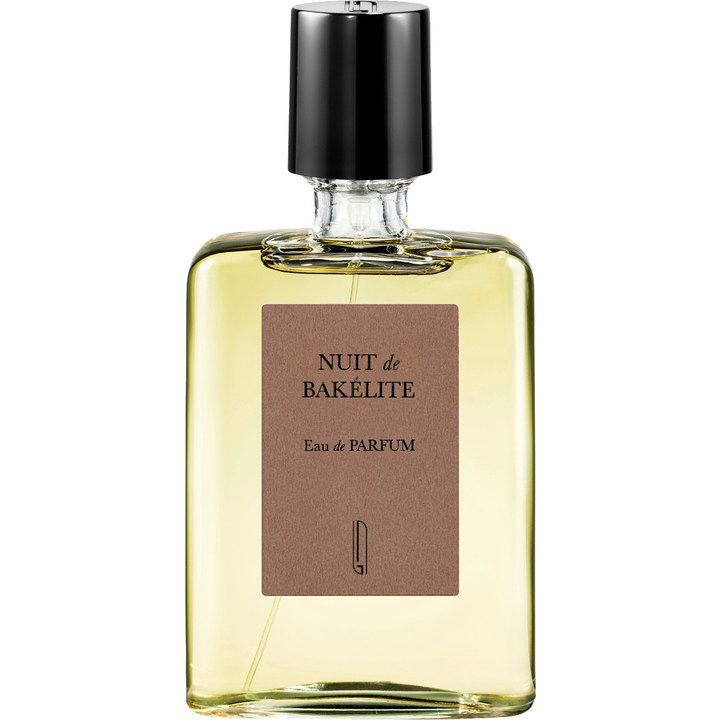


 Top Notes
Top Notes 


 Heart Notes
Heart Notes 


 Base Notes
Base Notes 













 BoBoChamp
BoBoChamp Kusya
Kusya Ngarcia
Ngarcia SayreBea
SayreBea Ch03np
Ch03np